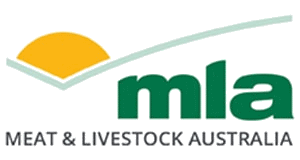PDS: Winter Forage Tropical Grass Systems for Cattle
| Project start date: | 13 September 2019 |
| Project end date: | 15 May 2023 |
| Publication date: | 17 April 2024 |
| Project status: | Completed |
| Livestock species: | Grass-fed Cattle |
| Relevant regions: | NSW, Queensland, Sub-tropical moist, Sub-tropical sub-humid, Temperate sub-humid |
|
Download Report
(2.9 MB)
|
|
Summary
The Northern Rivers region of New South Wales has a subtropical environment, with summer dominant rainfall and a dry spring period. The pasture species, both native and introduced are summer active. They have a reduced dry matter production and a decline in metabolisable energy, crude protein, and digestibility, in the late autumn and winter months.
The principal cattle operations are breeding herds producing veal calves for slaughter or sale to backgrounders or feed lotters on the tablelands and slopes regions of New South Wales and Queensland.
The low quantity and quality of the tropical pastures in winter restricts the number of breeding cows that can be carried in the Northern Rivers region properties. The breeding cows can suffer a negative energy balance for several months in the April to November period. This is the period of calving and rejoining to access the higher priced weaner sales from February to May.
This project is aimed at filling the feed gap by better managing the tropical grasses in summer/autumn and direct drilling ryegrass and oats into the managed sward to give high quality grazing in the winter months. The tropical grasses respond with increased production in spring due to accessing the residual nitrogen from the winter forage crop.
Giving the breeding herd access to winter forage from May to November impacted the productivity and profitability drivers of increased year-round stocking rate, decreased rejoining period, increased cow conception rate and increased the calf growth rate.
There are five key findings:
• The traditional winter feed gap can be filled by winter forage and produce a positive economic benefit ranging from $37 to $1,344 per hectare.
• Better managing the tropical grasses can increase the feed quality and increase animal performance. The year-round stocking rate was generally doubled. The breeding herds' calving rate increased and the days to re-joining decreased.
• The winter forage/managed tropical grass system increased all the beef breeding herd productivity drivers and generated whole farm benefits.
• The system increased the red meat produced per hectare. Production ranged from 90kg HSCW/hectare to 248kg HSCW/hectare. This was primarily due to the increased stocking rate.
• The winter forage/managed tropical grass system allowed cattle numbers to be maintained through the drought year of 2019 and be highly productive in the following years.
Objectives
The objective of the project was to demonstrate the impact of winter forage and managed tropical grass on the productivity, profitability, and sustainability of the breeding herds on the Northern Rivers of NSW. In addition:
- to have the technology of managing the tropical grass pasture throughout the year and the establishment of winter forage into these existing pastures adopted by the wider beef producing community.
- to demonstrate that filling the winter feed gap will have a positive effect on the productivity drivers of stocking rate, cow fertility and calf growth rate.
MLA action
MLA continues to deliver the Producer Demonstration Site (PDS) program, supporting livestock producers working in peer-to-peer groups to pursue new skills, knowledge and management practices applicable to their own commercial livestock production systems.
More information
| Project manager: | Alana McEwan |
| Contact email: | reports@mla.com.au |
| Primary researcher: | Norco Rural Stores |


